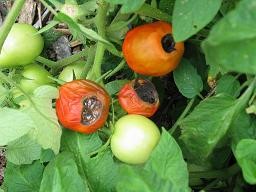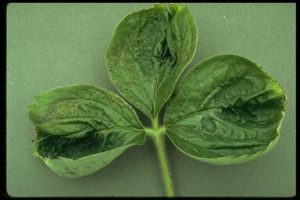Calcium forms insoluble compounds with other elements in soil, such as phosphorous. Calcium that is in the form of an insoluble compound is not available to plants.
Since calcium is a positively charged ion, it is adsorbed in the soil to the surface of clay and organic particles which are negatively charged.
Positively charged ions adsorbed to soil particles are termed “exchangeable ions” because they can be exchanged by other ions present in the soil solution. Soil analysis determines the level of exchangeable calcium ions, and not the total calcium in soil, because the exchangeable calcium is the form which is available to the plant.
Several factors in the soil analysis can help in assessing the availability of calcium to plants:
- Soil pH – usually soils with a higher pH level contain more available calcium.
- CEC – this is a soil characteristic that describes the total amount of positively charged exchangeable ions that the soil can hold. A higher CEC indicates a higher capacity of the soil to adsorb and hold calcium, and therefore higher calcium availability.
- Presence of competing ions – calcium competes with other positively charged ions, such as sodium (Na+), potassium (K+), and magnesium (Mg+2). Applying too much of these positively charged ions might decrease calcium uptake by plants. Sodium ions can replace the adsorbed calcium, damage soil structure and decreases calcium availability.
OTHER REACTIONS OF CALCIUM IN SOIL
Calcium-phosphorous precipitation – when free calcium accumulates in the soil solution (e.g. when soil pH is high), calcium tend to form insoluble compounds with phosphorous. Consequently, phosphorous availability is also significantly decreased.
Calcium stabilizes soil structure – the calcium that is adsorbed to soil particles helps in stabilizing the soil structure. Adsorbed sodium might cause the soil to crack when dry and swell up when wet. Calcium replaces the adsorbed sodium and prevents damages to soil structure.
CALCIUM DEFICIENCY
Calcium deficiency is usually caused due to low calcium availability or due to water stress which results in low transpiration rates. The symptoms of calcium deficiency include curling of young leaves or shoots scorching or spotting on young leaves, poor growth, leaf tip burns, stunted roots, and damage to fruit.
SOURCES OF CALCIUM FOR PLANTS
The most common calcium sources are calcium nitrate, calcium chloride, lime, gypsum, calcium chelates and some organic sources.
Goldsuite have a range of Calcium Suspension Concentrates that are highly concentrated and fully water dispersible. These products are very finely ground so they may be applied through all irrigation types with no blocking of nozzles even in drip irrigation. These products include Calcitic and Dolomitic Lime and Gypsum in liquid form.
Source (Smart Fertilizer Software. Published 12 February 2020)



